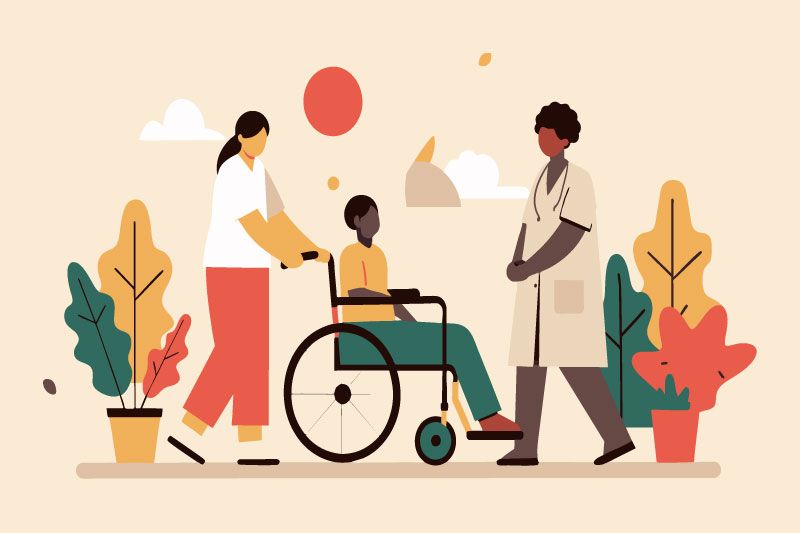Helping Older and Disabled Californians Thrive
California is home to over six million people aged 65 and over, and the over seven and a half million with a disability, accessing necessary care has often been challenging.
Medi-Cal has introduced new programs integrating in with Medicare, elimination of asset limits restricting eligibility, enhanced care management, and expanded community services such as housing aid and healthy meals.
In a media briefing on July 10, hosted by Ethnic Media Services, a panel of experts outlined the new programs available to older and disabled Californians, their implementation, and the impact on lives.
Speakers
![]()
- Anastasia Dodson, Deputy Director, Office of Medicare Innovation and Integration, Department of Health Care Services
- Dana Durham, Chief, Managed Care Quality and Monitoring Division, Department of Health Care Services (not pictured)
- Jenna LaPlante, Senior Director of Care Management Programs, Institute on Aging
- Carrie Madden, Aging and Disability Resource Connection of Central and South LA
- Keith Miller, Executive Director, CALIF (Communities Actively Living Independent and Free)
- Lilly Sanchez, Case Manager, CALIF
Dana Durham highlighted how Medi-Cal assists older and disabled Californians through Community Supports and Enhanced Care Management (ECM), programs addressing “social drivers of health” — such as housing, healthy food, language access, and preventive health care — “in people’s communities so they can stay in the least restrictive setting possible.”
Community Supports encompass medically tailored meals, transportation to and from appointments, in-home care, home accessibility modifications, long-term care transition assistance, mental health care, substance abuse disorder treatment, and housing aid. “Historically, the healthcare system has been difficult to navigate,” especially isolating seniors and people with disabilities, Durham noted.
ECM assigns high-risk members a lead care manager to help them navigate the system and access Medi-Cal services. These care leads can travel to meet members when necessary, such as when patients are homeless, disabled, or isolated.
For Californians eligible for both Medi-Cal and Medicare, there are now dual Medi-Medi Plans in 12 counties that cover copays and services across both programs, explained Anastasia Dodson. By 2026, Medi-Medi will be available statewide. Currently, of the 6.6 million Californians on Medicare, 1.6 million are also on Medi-Cal.
Dodson also mentioned that in January 2024, Medi-Cal eliminated asset limits, meaning that bank accounts, property, or a second car won’t affect eligibility; now, only income and household size count.
From the Community
Since the expansion of Medi-Cal began in 2022, “We went from three counties to nine statewide where we provide ECM and connection to community supports like doctors, caregivers, meals, transportation, residential care away from nursing homes, home accessibility modifications, housing navigation, and rent aid,” said Jenna LaPlante. “It’s more than we’ve ever served, and we’re in talks with health plans to expand more,” she added.
“Hiring bilingual, bicultural staff from the communities we serve has been key to reaching communities who weren’t historically engaging with our services.” LaPlante shared an example of hiring a Vietnamese-speaking care manager who went to community centers in San Jose and Santa Clara counties, resulting in a significant increase in engagement and referrals. Similar efforts are now being made in Merced County with Spanish-speaking staff.
“This recent expansion to use Medicaid dollars for social determinants of health, like the first month’s rent and a security deposit, is incredibly novel. I don’t see it anywhere else,” LaPlante noted. “Each state can apply to waive how they use federal dollars for more than just medical services. Some do and some don’t … but here in California, we’re at the forefront.”
Carrie Madden emphasized that health risks for older and disabled Californians often overlap across many areas of life, not just physical health concerns. For instance, if “they’re homeless with no income, no food, and they need a wheelchair.” Madden noted that being able to coordinate and refer individuals to services addressing various needs has been very helpful. “We have no wrong door. People who call us will get some kind of referral … and we follow up to make sure they get the services they need to live out of nursing homes and treatment facilities, back in the community they came from … With the Medi-Cal change now, we’re seeing individuals get this help much faster.”
ADRC partners with Communities Actively Living Independent and Free (CALIF), one of 28 independent living centers in California. Keith Miller stated, “Recently we entered a contract with an insurance provider to provide these new Medi-Cal programs like housing navigation or retention, assistive technology, and ongoing case management,” particularly for people frequently entering emergency rooms. At CALIF, where “51% of our staff are people with disabilities,” this transformation of Medi-Cal has been crucial in “keeping our clients out of institutions and nursing homes.”
Lilly Sanchez shared the story of a high-risk client who often visited the ER and was about to enter a nursing home before being referred to CALIF. Over three months, CALIF helped him enroll in Medi-Cal and stay in his community. “When he came to us, he didn’t have in-home support, no California ID, couldn’t transport himself to and from the services he needed,” Sanchez explained. “We were able to do the paperwork for him and coordinate our social services with medical care through the insurance plan.”
“Because of that coordination of care, he is currently housed, he has in-home support, he has food that nurtures him to stop needing the emergency room as much as he was before,” Sanchez continued. “This speaks to how important it is not only to have medical care available but to coordinate it with all the other social services people need to be healthy,” she added. “Medi-Cal is making that coordination possible.”


